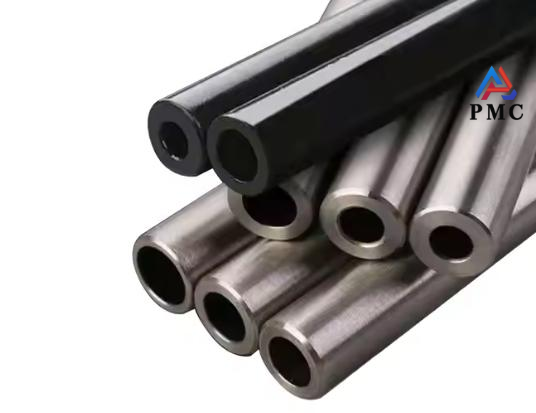
304 Precision Seamless Steel Pipe Quality Assessment Guide
304 precision seamless tube is a seamless tube made of stainless steel material (mainly 304 stainless steel), with high precision and good surface quality. On the big stage of industrial production, 304 precision seamless steel pipe can be called a "jack of all trades" and is widely used in many fields such as petrochemical industry, machinery manufacturing, automobile industry, aerospace, etc. If the quality is not up to standard, it may cause pipeline leakage in petrochemical industry, leading to serious safety accidents and environmental pollution; in the aerospace field, it may even endanger flight safety. Therefore, accurately evaluating the quality standard of 304 precision seamless steel pipe is the key to ensuring the safe and efficient operation of industrial production, which can effectively reduce costs, reduce failures, and promote the steady development of various industries.
1. Chemical composition (material composition)
The basic chemical composition requirements of 304 stainless steel should comply with international and domestic standards (such as ASTM, GB, JIS, etc.), and its core components include:
Carbon (C): ≤ 0.08%
Silicon (Si): ≤ 1.00%
Manganese (Mn): ≤ 2.00%
Phosphorus (P): ≤ 0.045%
Sulfur (S): ≤ 0.030%
Chromium (Cr): 18% ~ 20%
Nickel (Ni): 8% ~ 10.5%
These elements determine the corrosion resistance, high temperature resistance and plasticity of 304 stainless steel. The material composition of the steel pipe must be verified by spectral analysis or chemical analysis. Among them, chromium (Cr) and nickel (Ni) are the most important alloying elements. If the chromium and nickel content is insufficient, the corrosion resistance and comprehensive performance of the pipe will be greatly reduced, and problems such as rust and decreased strength will easily occur during use.

2. Mechanical properties
The mechanical properties of 304 precision seamless steel pipe are important indicators for uating its quality, including the following aspects:
Tensile Strength: ≥ 520 MPa This represents the maximum stress value that the pipe can withstand before breaking due to tension, ensuring that it will not break easily when subjected to large tensile forces.
Yield Strength: ≥ 205 MPa It is the stress when the pipe begins to produce plastic deformation, which enables the pipe to maintain a stable shape under a certain pressure and prevent excessive deformation.
Elongation: ≥ 40% The plasticity of the pipe means that it can stretch moderately without breaking when subjected to stress, and can be smoothly formed during the pipe installation and bending operation.
Hardness: HRB 80 or less (depending on the specific application)
Mechanical properties testing can be carried out through tensile tests and hardness tests to ensure that the strength and toughness of the steel pipe meet the specified standards and are suitable for use in high temperature, high pressure or other harsh environments.
3. Appearance and size
Appearance and size are the "face" to evaluate the quality of 304 precision seamless steel pipe. Its inner and outer surfaces should be smooth and tidy, without defects such as cracks, scratches, folds, rolling, delamination and scarring. In terms of size, there are strict standards for outer diameter and wall thickness. The allowable deviation of standardized outer diameter varies according to different grades, such as D1 grade is ±1.5%, minimum ±0.75mm, D2 grade is ±1.0%, minimum ±0.50mm.
The wall thickness also has a corresponding allowable deviation range, and the allowable straight depth for hot rolling (extrusion, expansion) and cold drawing (rolling) is different. For example, when the diameter of the hot-rolled tube is less than or equal to 140mm, the allowable straight depth is not more than 0.5mm, ensuring accurate size and meeting the installation and use requirements of different industrial scenarios.
4. Nondestructive testing
For 304 precision seamless steel pipes, non-destructive testing (NDT) must be performed to ensure its quality:
Ultrasonic testing (UT): used to check whether there are cracks, pores, inclusions and other defects inside the steel pipe.
X-ray testing (RT): suitable for detecting structural defects inside the pipe.
Eddy current testing (ET): used to check the surface or near-surface defects of steel pipes.
Magnetic particle testing (MT) and penetrant testing (PT): usually used for the detection of surface cracks or local defects.
5. Standards and certification
304 precision seamless steel pipes should comply with the following international or domestic standards:
ASTM A312: Standard for seamless stainless steel pipes with higher requirements.
GB/T 14975: Chinese national standard for seamless stainless steel pipes.
EN 10216-5: This standard is applicable to EU countries and specifies the production and technical requirements for seamless stainless steel tubes.
In addition, some industry applications may also require other certifications, such as ISO 9001 quality management system certification, ISO 14001 environmental management system certification, etc.
Read more: Key Indicators and Grades of Seamless Steel Pipe Accuracy


